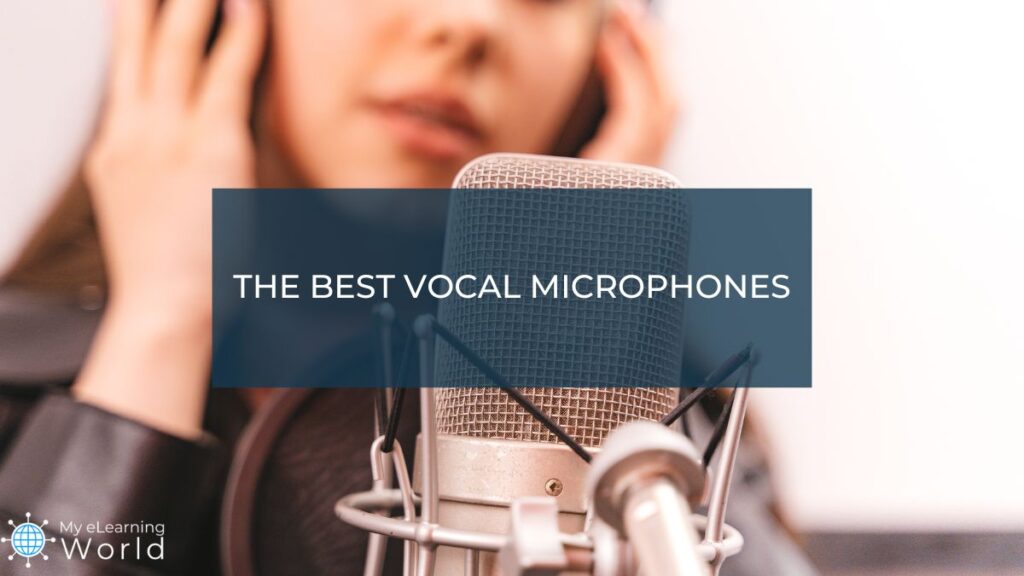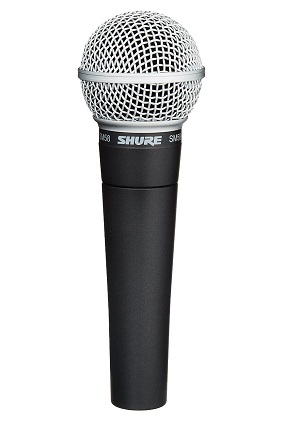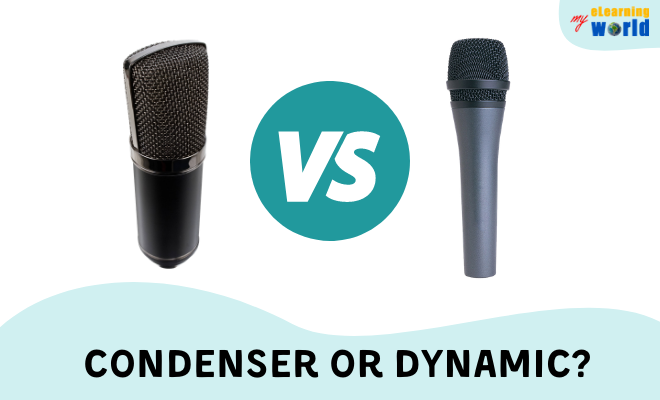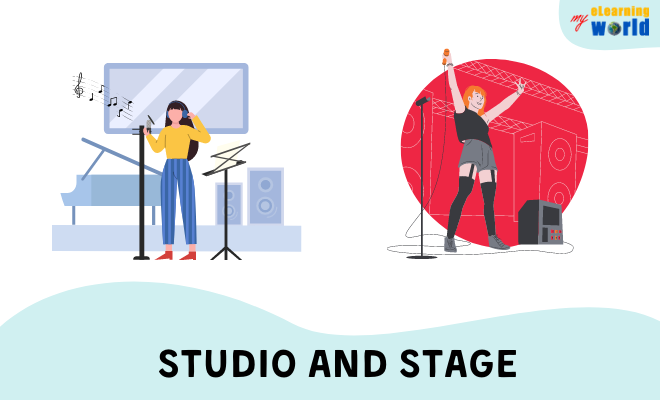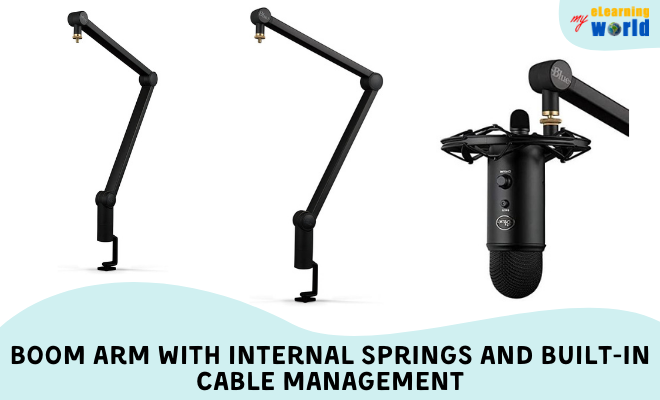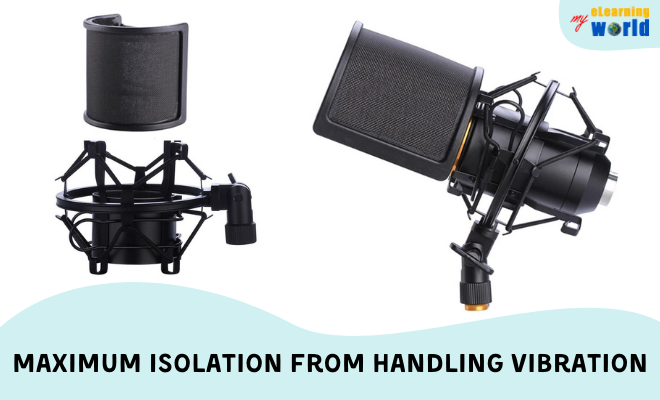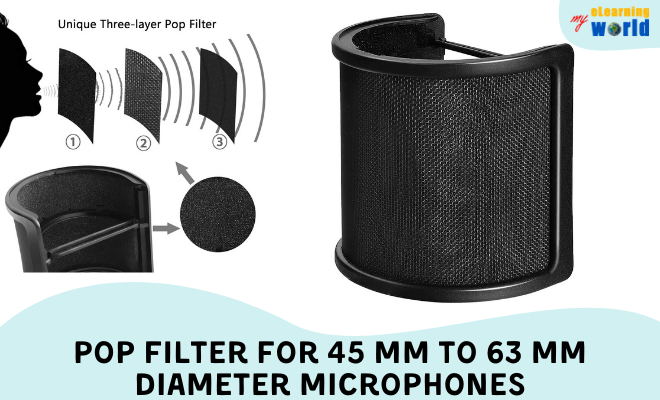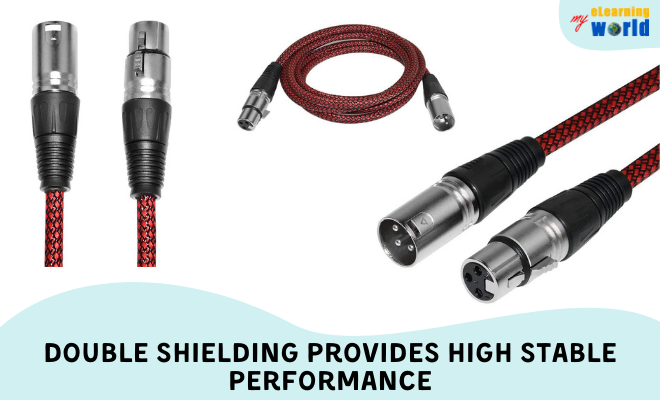Finding the best microphones for vocals could be the difference between your recordings and live performances sounding great or sounding like a muddled mess.
The vocals are one of the main components of a song. When you think of your favorite song, you likely remember the vocals of the person singing it along with the lyrics before the melody pops in your mind.
While a good voice over microphone can help with other types of recording, you want one designed for vocals when recording songs. The right choice will make your voice sound crystal clear to listeners and also ensure that your songs pick up the complete range of your voice.
But with so many different vocal microphones on the market today, how can you find the one that’s right for your needs?
There’s no one-size-fits-all vocal microphone that works best for all singers in all genres and in all performance environments, so there are a few important things you’ll need to consider, including your budget, music genre, singing style, and performance environment. We’ll talk about all of these factors in depth in a bit.
To help you choose the right vocal microphone for your needs, we’ve tested and reviewed dozens of different models over the last few years. We’ve curated a list of 14 of the very best vocal microphones on the market today across a range of categories and budgets, so you can find the perfect one that best fits your needs. From dynamic mics to condenser mics and budget-friendly models to high-end options, you’re sure to find something that will work for you.
This guide has been fully updated for 2023 to include the latest options so you can make an informed buying decision.
Ready to get started? Let’s go…
Disclosure: Some of the links in this article are affiliate links, meaning at no additional cost for you, we might get a commission if you click the link and purchase.
Quick Picks for the Best Vocal Microphones
If you don’t feel like reading the full guide to the top microphones for recording vocals, you can check out a few of my quick picks below:
My Top Pick
AKG Pro Audio C214
What’s inside?
- Unidirectional pattern
- Wired connections
- Bass-cut filter
- Scratch-resistant finish
- Dynamic range of up to 156 decibels
Killer feature: Integrated suspension that cuts down on mechanical and background noises
I recommend the AKG Pro Audio C214 for anyone looking for a mic for vocals. It is my top pick because the model reduces the proximity effect in close-up recording and has integrated suspension that cuts back on both stage vibrations and mechanical noises.
Also Great
Rode NT2-A
What’s inside?
- Large frequency range
- Three-position polar pattern
- High-pass filter that works in three directions
- One-inch gold capsule
- Internal shock mounting
Killer feature: Durable design makes this device suitable for indoor and outdoor use
Though it’s not my favorite microphone, the NT2-A is another one of my top picks. This mic comes with a dust cover for protection along with a pop filter and shock mount. You can easily adjust the device to make it work for any type of recording.
Also Great
Shure SM58
What’s inside?
- Frequency response of 50 to 15,000 Hz
- Pneumatic shock system
- Designed for outdoor and indoor use
- Steel mesh grille
- Included storage bag
Killer feature: Pop-up filter blocks noises from your breathing and wind outside
I also encourage you to take a look at the SM58 from Shure, which has a stronger frequency range than other affordable choices do at 50 Hz to 14 kHz. With the included break-resistant stand and zippered storage case, you can use this microphone almost anywhere.
5 Easy Steps to Choose a Mic Suitable for Your Vocals
While you can walk into almost any store and buy a standard microphone, there’s no guarantee that it will meet your vocal recording needs. I created this buyer’s guide as a way to help you choose the right one from the top models that I ranked above.
Step 1: Choose the Type of a Microphone
One of the first things that you need to decide on is the type of vocal microphone that will meet your needs. You’ll find both condenser and dynamic mics.
A condenser microphone is better at picking up delicate and soft sounds. This is a good option for those who have low and breathy voices that other models cannot pick up.
Dynamic mics are better at detecting louder and stronger sounds. If you’re in a rock band with those who play drums and other instruments, a dynamic microphone is the best choice for you.
Though it will pick up the instruments that are around you, a dynamic microphone will put the focus on your voice and make sure that it comes through.
Step 2: Analyze Your Budget
A common question that I get from vocal artists is about how much money they should spend. If you dream of going on American Idol or releasing a song on YouTube that gets millions of views, you probably don’t have as much money to spend as some of your peers do.
Knowing that my readers all have different budgets in mind, I ranked my list of vocal microphones at prices as low as $100 or less. Not only can you save when you start recording, but you get a good idea of what you want and need when it comes time to upgrade later.

Those in the $100 to $300 range have some stronger features that might appeal to you. You can also get a good device at around $500 or less or spend up to $1,100 on one. The amount that you spend will depend on what you want out of a vocal microphone.
Step 3: Consider Your Music Genre
Make sure that you consider the music genre that you use when picking a vocal mic. Shure makes several models that are suitable for rock musicians and those who sing along with instruments.
You typically want to choose one with a large diaphragm and look at dynamic microphones. Dynamic mics are capable of picking up the instruments that complement your vocals while also ensuring that the crowd can hear your lyrics. Electronic musicians can also benefit from them.
If you play light or soft music, a condenser mic is a better choice. They often have small diaphragms and do an amazing job of putting the focus on your voice. These devices are great for recording songs in the comfort of your studio that you release online as well as when you play live in front of an audience.
Step 4: Singing Style
Some artists do not realize that their singing style plays a key role in the type of vocal microphones that they need.
Have you ever been to a concert where the crowd drowned out the sound of the singer’s voice? If you have a soprano or another type of higher voice, you want to make sure that the device can pick up the highest notes that you hit.
It’s also important to consider anyone else who plays on your track. Let’s say that you have an idea for a rock or pop song that includes a short rap in the middle. The mic needs to provide clarity to the rapper and ensure that the audience can hear all of the lyrics in that portion. You may want to choose a device that can detect drums and other instruments that your band plays, too.
Step 5: Recording Environment
A common thing that some artists forget is that they need to take into account their recording environment. There is a big difference between the vocal microphones that you use while standing on a stage versus those you use in a recording studio.
A studio mic often weighs less and features a dedicated power supply. That power supply lets you plug studio mics in and begin recording your songs in seconds. You’ll also find that a recording microphone will usually have polar patterns designed to eliminate background noises to ensure that your voice takes center stage.
If you want to play concerts and shows, you’ll usually go with a wireless microphone that gives you more freedom of movement. Some of these work on rechargeable batteries that you can charge before your show. Dynamic microphone models are perfect for stage performances because they are compatible with electric guitars and other instruments. Some devices are also suitable for open-air performances in which you’ll sing in front of others but without instruments.
Vocal recording artists can work from home and release songs that their fans love, but they can also perform live in front of large crowds. No matter how much experience you have or what type of singing you want to do, you need a good mic by your side. Choose the right one for you based on factors such as how much you can afford to spend and where you plan to record.
 |
For rhythm and blues or soul singers with vocal ranges up through soprano. Category: condenser
|
Amazon →B&H →SweetWater → |
 |
Good for acoustic and live performances as well as country and soul music. Category: condenser
|
Amazon →B&H →SweetWater → |
 |
Perfect choice for rock and soul performers along with mellow and lower vocal types. Category: condenser
|
Amazon →AKG →B&H → |
 |
Suitable for tenor and bass vocals as well as classic and soul music. Category: condenser
My choice among condenser microphones!
|
Amazon →B&H →SweetWater → |
 |
Best for hip hop artists and deep voices. Category: condenser
My choice among microphones for vocals!
|
Amazon →AKG →B&H → |
 |
Nice choice for R&B and soul singers along with baritone and other deeper voices. Category: condenser
|
Amazon →B&H →SweetWater → |
 |
Good for jazz and soul music as well as other genres. Category: condenser
|
Amazon →B&H →SweetWater → |
 |
Option for alto and soprano voices and pop or rock music. Category: condenser
|
Amazon →AKG →B&H → |
 |
Top pick for rock and pop music as well as soprano and alto vocals. Category: dynamic
My choice among dynamic microphones!
|
Amazon →Shure →B&H → |
 |
Another good option for rock musicians and touring artists. Category: dynamic
|
Amazon →B&H →SweetWater → |
 |
Suitable for acoustic and folk music as well as soprano and bass vocals. Category: dynamic
|
Amazon →B&H →SweetWater → |
 |
Good for studio recording artists along with hip hop and rap artists. Category: dynamic
|
Amazon →B&H →SweetWater → |
 |
For rock music and singers who have quiet voices. Category: dynamic
|
Amazon →Shure →B&H → |
 |
Nice for low and mellow voices as well as soul, classic and R&B singers. Category: dynamic
|
Amazon →B&H →SweetWater → |
What are the Best Microphones for Vocals?
Now that you know what my top picks are, it’s time to get into the details on these vocal microphones. Read through my ultimate picks to find the best mic for your vocals.
Condenser Microphones
Condenser mics are ideal for picking up delicate and soft sounds. They are suitable for recording in a studio environment. Let’s start!
1. Audio-Technica AT2020

The AT2020 has the consistency that you need when recording different types of voices and genres. It has a high sound pressure range that helps it pick up both soprano and baritone voices. With the cardioid polar pattern, the design allows you to pick up vocals from around and behind you while also isolating other noises. You also get an extensive frequency response range of up to 20,000 Hz.
Features:
- One-inch capsule
- Integrated suspension
- Dynamic range with ultra-low noise pickups
- Low-cut switch
- Spider shock mount
Pros:
- Nice sensitivity to pick up more sounds and noises
- Perfect for both instrument and voice recording
- Resistant to scratches and other damage
- Handles drops and falls without breaking
- Reduces both background and mechanical noises
Cons:
- More expensive than similar mics
- May sound a little muddy
- Can arrive with broken pins or other damage
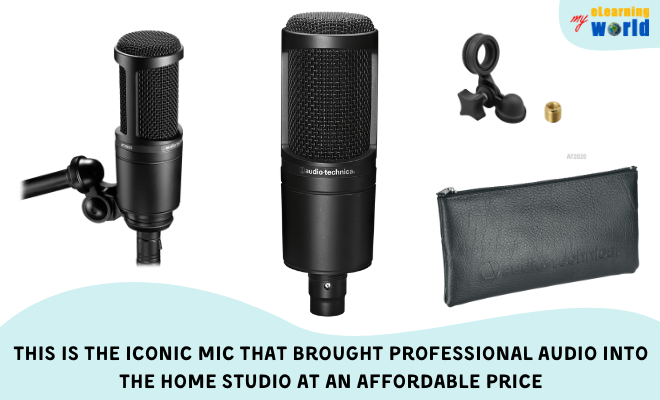
Best for: Rhythm and blues or soul singers with vocal ranges up through soprano.
Check out this YouTube video to get a better look at the AT2020. You can see how it handles and some of the reasons why it ranks as one of my top choices before you buy.
Buying Options
- Check price on Amazon →
- Check price on B&H →
- Check price on SweetWater →
- Check price on Guitar Center →
2. Audio-Technica AT2035

You don’t need to blow your recording budget on one piece of equipment because you have affordable options such as the AT2035. The AT2035 is one of the best choices for live recording because it has a high-pass filter and a range that picks up all of your instruments as well as the crowd. This is easily one of the top choices for acoustic performers, too. It can detect the quietest of voices.
Features:
- Custom shock mount
- 33-decibel audio sensitivity
- Wired connections
- Switchable high-pass filter
- 10-decibel pad
Pros:
- Frequency response range of 20 to 20,000 Hz
- Provides natural and smooth sound recording
- Cardioid mic design picks up sounds from all directions
- Good sensitivity to pick up more sounds
- Works well with most computers and audio equipment
Cons:
- Does not come with a stand
- May have some loose connections
- Produces some flat or dull sounds

Best for: Acoustic and live performances as well as country and soul music.
Don’t take my word for it on whether the AT2035 is a great microphone. I found this video on YouTube that lets you see how it works.
Buying Options
- Check price on Amazon →
- Check price on B&H →
- Check price on SweetWater →
- Check price on Guitar Center →
3. AKG P220
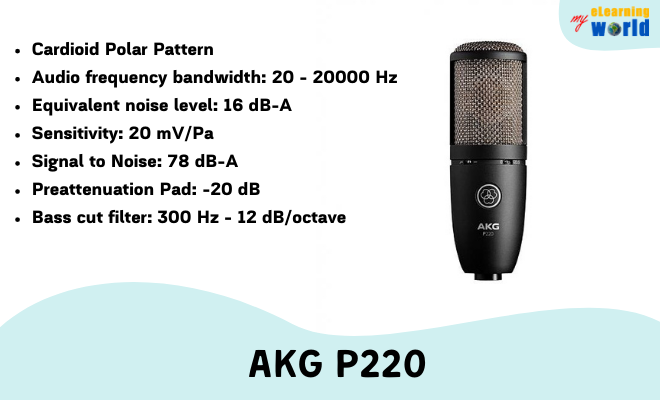
With the low price of the P220, you can feel confident when you step in front of the mic and know that you’ll still get the quality that you need. I like that it has a switchable bass filter that lets you eliminate other noises to focus on your voice.
Designed for performers of all types, it has a rugged case that makes it perfect for live gigs.
You’ll also like that the P220 works just as well inside your studio, too.
Features:
- Unidirectional polar pattern
- Three-pin XLR connector
- Spider shock mount
- Aluminum carrying case
- Switchable bass-cut filter
Pros:
- Nice low price for budget shoppers
- Frequency range of up to 20,000 Hz
- Low sensitivity to pick up lighter sounds
- Works with most stands
- Solid audio quality for studio recording
Cons:
- Doesn’t last as long as other microphones do
- May produce some hissing or other odd noises
- Picks up more background noises than it should
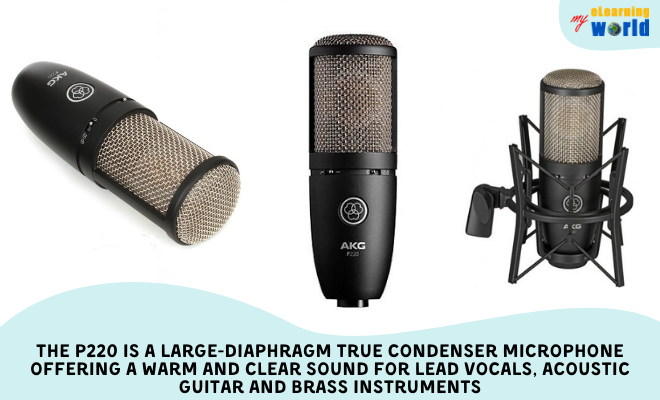
Best for: Rock and soul performers along with mellow and lower vocal types.
Find out the top features of the P220 and get a better look at this model with this YouTube video. The reviewer goes over some of the top reasons why the P220 is worth the money and how you can use it in your studio for recording audio.
Buying Options
4. Rode NT2-A
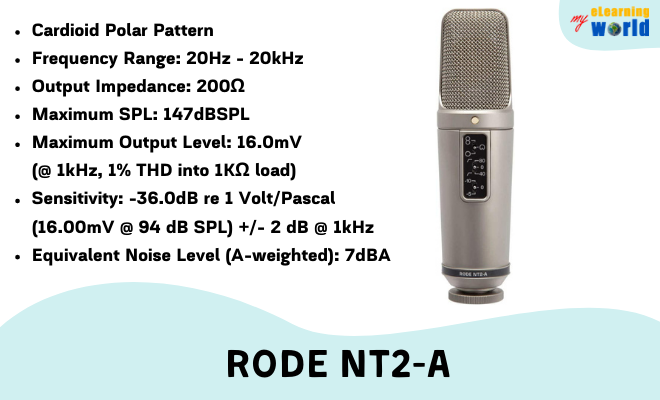
Modern recording artists need equipment that can handle different genres and voices, which is why the NT2-A is such a popular choice. Capable of giving you the silky vocals that Frank Sinatra and other big names produced, it has a pop filter that gives your vocals more clarity. The included dust cover keeps it safe in your home or pro studio and ensures that it’s ready to go the next time that you have a song in your heart.
Features:
- Large one-inch gold capsule
- Three-position high-pass filter
- Three-position variable pad
- On-body control with polar pattern
- Shock mount and pop filter included
Pros:
- The included stand adjusts to reach the direction that you need
- Works well for both instrument/song and voice recording
- Great device for an affordable price
- Lets you use the polar pattern on the mic
- Can easily adjust the filter and other settings
Cons:
- The included stand can tilt to the side or tip over
- Can pick up some background noises
- You may have problems getting a refund or sending it back
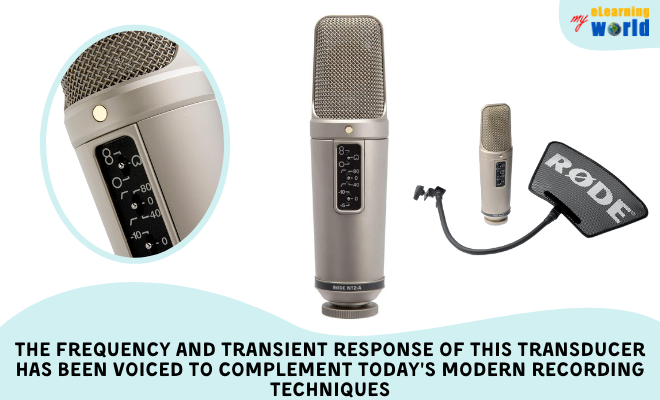
Best for: Tenor and bass vocals as well as classic and soul music.
I tracked down this YouTube review that gives you an inside look at the NT2-A. You can learn more about adjusting the microphone and using the different settings, too.
Buying Options
- Check price on Amazon →
- Check price on B&H →
- Check price on SweetWater →
- Check price on Guitar Center →
5. AKG C214
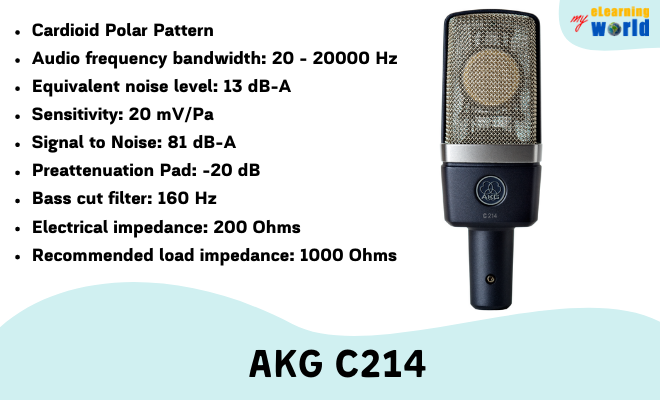
Designed for lead singers, the C214 does an amazing job of picking up both your vocals and any background artists on your song. It has a nice range that works with both high soprano voices along with deeper bass vocals. As the C214 picks up instruments that include percussion and wood instruments, I also like that it reduces the amount of editing that you need after a recording session.
Features:
- Bass-cut filter
- Switchable attenuator
- All-metal body mic
- Integrated suspension
- Double-mesh grille
Pros:
- Built-in suspension cuts down on background noise detection
- Frequency response range of 20 to 20,000 Hz
- Sensitivity as low as 20 mV/Pa
- Resistant to both scratches and shocks
- Includes both a shock mount and windscreen
Cons:
- Makes some voices sound either too sharp or too dull
- Some parts can become loose
- Can sound too harsh at times
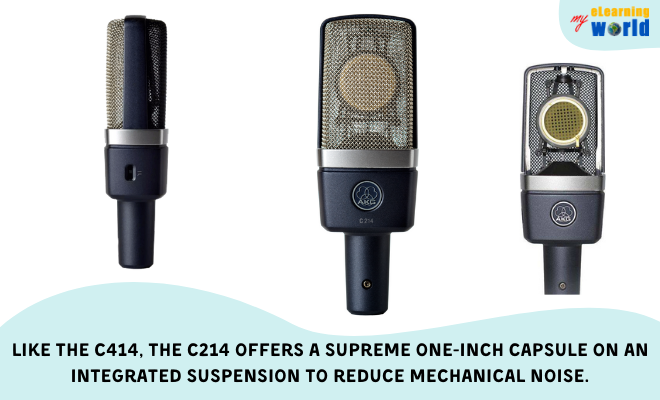
Best for: Hip hop artists and deep voices.
To get a good look at how the C214 records voices and other sounds, I recommend watching this YouTube video when you have a few minutes free. It lets you see how this device responds in different situations.
Buying Options
6. Rode NTK

Perfect for jazz musicians, the NTK delivers the best quality. It has a vintage look that works for soul and R&B singers along with a wide dynamic range. The included dedicated power supply helps you record live performances without tracking down a battery. Many singers also like that the NTK has a steel mesh head that can stand up to anything on the road and an ultra low noise design that picks up deeper voices.
Features:
- One-inch gold capsule diaphragm
- Valve condenser microphone
- Class A circuitry
- Internal shock mounting
- Heat-treated mesh head
Pros:
- Rejects most types of RF and background noises
- Comes with a dedicated power supply for studio use
- Dynamic range with ultra-low noise detection
- Lets you replace the tubes as needed for future use
- Picks up the lowest of voices
Cons:
- Needs a better tube for stronger recording
- May have some minor flaws or defects
- Lacks some of the features found on expensive mics

Best for: R&B and soul singers along with baritone and other deeper voices.
As much as I like the NTK from Rode, I didn’t rank it as high on my list as others. You can get a good look at some of the reasons why it’s not the best microphone but still worth the money in this YouTube review.
Buying Options
- Check price on Amazon →
- Check price on B&H →
- Check price on SweetWater →
- Check price on Guitar Center →
7. Neumann TLM 102

As a new vocal artist, you can easily set up the TLM 102 and get the same quality that professionals do. It prevents other equipment from distorting your vocals and blocks out electromagnetic issues. Capable of giving you smooth vocals, this is one of the best options for those who record in different genres. You’ll find that it can detect any type of voice or vocal work, too.
Features:
- Sleek and modern nickel finish
- Large diaphragm that works in different directions
- Maximum sound pressure of 144 decibels
- Built-in presence boost
- Comes in two finish options
Pros:
- Has a frequency response range of up to 20 kHz
- Includes a hard mount for setting up in your studio
- Provides nice quality with modern and vintage equipment
- Compact design to save you space
- Boosts lower voices and sounds at six decibels
Cons:
- Smaller in size than you might expect
- Can produce some distortion
- Similar mics have the same features but cost less

Best for: Jazz and soul music as well as other genres
You might think that a small microphone may not have all the power or features that you need, but this YouTube video will ease some of your worries. I recommend that you watch the whole video to see how the TLM compares to others on the market.
Buying Options
- Check price on Amazon →
- Check price on B&H →
- Check price on SweetWater →
- Check price on Guitar Center →
8. AKG C414 XLII
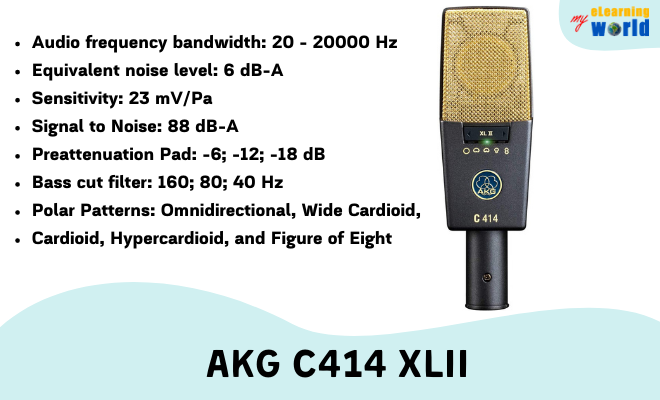
The high price tag of the C414 XLII proves that this is a tool designed for pros. Perfect for lead vocal artists, it has nine different polar patterns that you can use based on what you play. With three attenuation levels, you can also select the right level based on how close you are. Not only is it great for pop and rock music, but it works with low and high voices that range from alto to soprano.
Features:
- Nine polar patterns that you can choose from
- Three attenuation levels for all types of sound and vocal recording
- Three switchable bass-cut filters
- Built-in overload warning
- Large diaphragm capsule
Pros:
- Shock mount reduces both handling and mechanical sounds
- Lets you choose the best polar pattern for any type of recording
- Keeps the mic from overloading the circuitry
- Sensitivity range as low as 23 mV/Pa
- Bass-cut filter works at three different levels
Cons:
- Has features similar to those found on cheaper microphones
- May sound duller than you would like
- Makes some low noises as it records
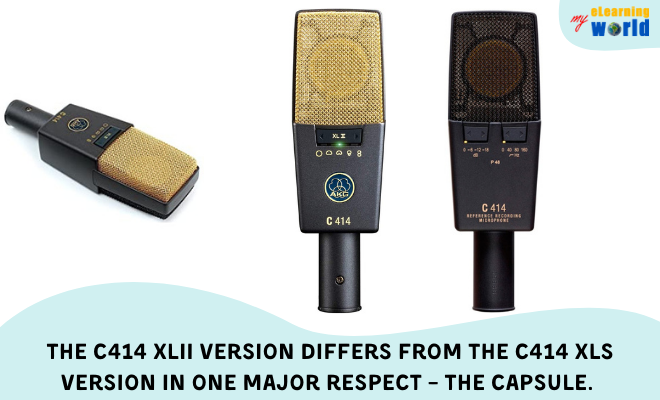
Best for: Alto and soprano voices and pop or rock music.
The C414 XLII is one of the newer designs from AKG Pro, which is why I recommend watching this short but detailed YouTube review. It goes over some of the upgrades that it offers and lets you see why you may want to spend some more money.
Buying Options
Dynamic Microphones
Let’s continue our reviews with dynamic microphone options. Dynamic mics capture all the sound in a room and perfect for live performances.
9. Shure SM58
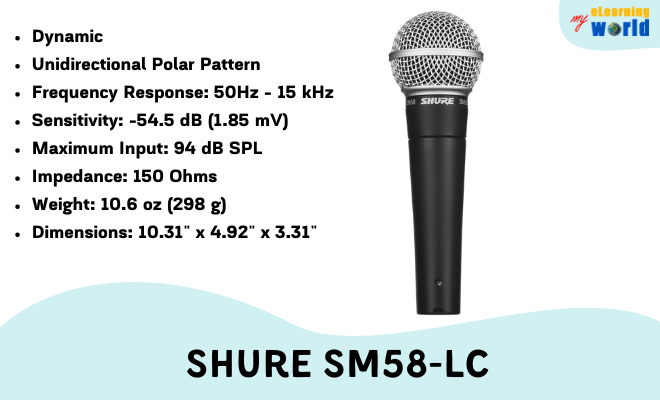
Pop musicians around the world use the SM58 when they work in a studio or play in front of crowds. They love that this dynamic mic puts the focus on their vocals rather than background noises as much as you will. Both the included windscreen and pop filter weed out the noises that might distort your voice to ensure that your fans hear only what they want to hear. Thanks to the durable design, you can take it on the road, too.
Features:
- Nice frequency range of up to 15,000 Hz
- Zippered storage bag included
- Steel mesh grille
- Break-resistant stand adapter
- Built-in pop filter
Pros:
- Durable design lets you use the mic inside and out
- Cuts down on background noises caused by wind or your breathing
- Strong choice for professional recording
- Reduces mechanical noises
- Provides smooth and silky vocals
Cons:
- No cable included in the package
- May give your vocals a slightly dull sound
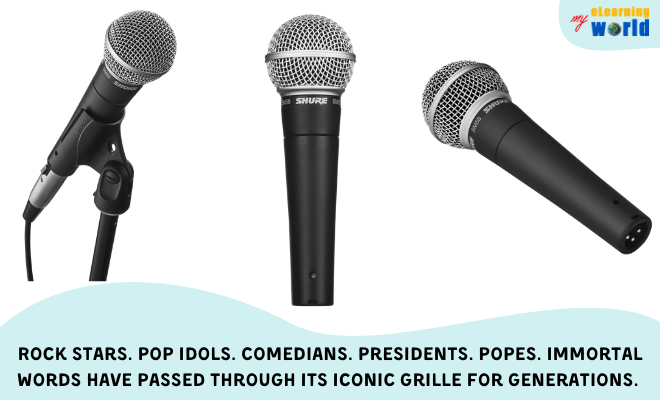
Best for: Rock and pop music as well as soprano and alto vocals.
If you’re on the fence about whether to invest in the SM58, I recommend checking out this video. It gives you a good idea of how well it responds in different situations.
Buying Options
10. Shure SM57
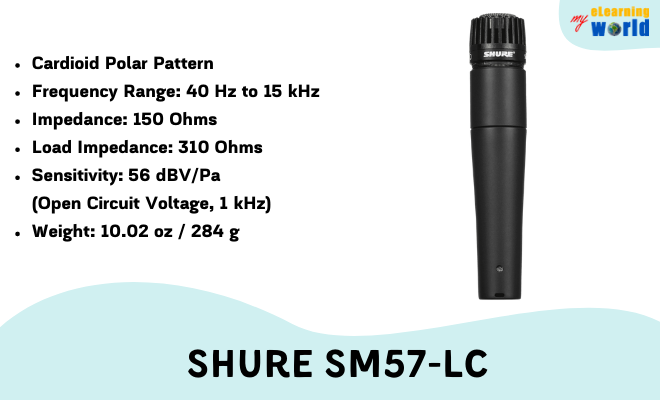
Similar to the last option, the SM57 dynamic mic also comes from Shure. It is one of the leading choices for rock musicians because it works with amplifiers but won’t let your instruments drown out your vocals.
Perfect for live shows, the SM57 lets you get as loud as you want to whip the crowd into a frenzy without changing your voice.
This vocal mic also weeds out wind and other background noises to help you hear your voice.
Features:
- Unidirectional polar pattern
- Wired connection
- Ergonomic design
- Shock mount system
- Weighs 10 ounces
Pros:
- Suitable for close-up recording
- Frequency range of 40 Hz to 14 kHz
- Durable design makes it suitable for daily use
- Contoured shape helps you hold it easily in your hand
- Lightweight size makes it great for long-term use
Cons:
- Doesn’t pick up some low or quiet vocals
- Sound quality is poor when compared to some microphones
- Can sound harsh or dull
- Lacks any cables or adapters
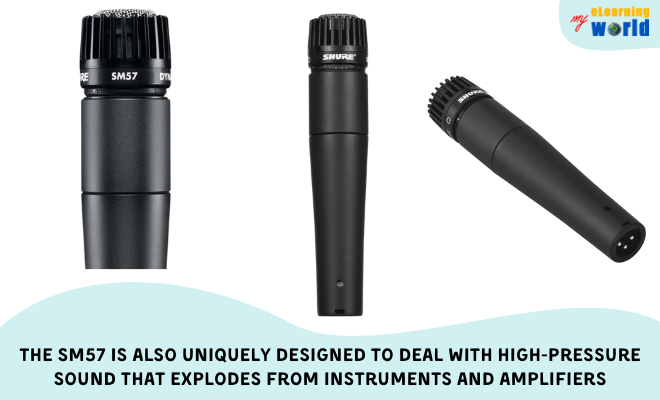
Best for: Rock musicians and touring artists
Take a look at how the SM57 vocal mic works in real life when you watch this YouTube video. Not only can you see how you can use this affordable model, but you also get a look at how it responds to different voices and vocals.
Buying Options
- Check price on Amazon →
- Check price on B&H →
- Check price on SweetWater →
- Check price on Guitar Center →
11. Rode NT1-A
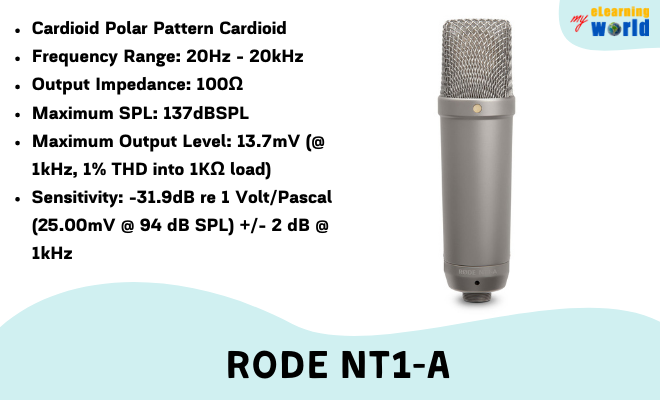
The ultra-low noise design of the NT1-A gives you a stronger vocal range that detects more of the voices of those who sing with you.
This popular vocal mic works just as well with acapella singers as it does with those who use background tracks and instruments.
I like that it comes with a video you can download to pick up tips on recording with it and that you get a 20-foot cable for connecting the mic to recording equipment and other tools.
Features:
- Weighs 4.6 pounds
- AC power source
- One-inch gold capsule
- Internal shock mount
- External condenser
Pros:
- Includes a dust cover for keeping the device safe when not in use
- Sensitivity range of as low a -31.9 decibels
- Comes with a 10-year warranty when you register the model with Rode
- Frequency range of 20 Hz to 20,000 kHz
- Picks up vocals as low as five decibels
Cons:
- Runs a little hot
- Can have some distortion with certain sounds
- Not a good choice for professionals or studio use

Best for: Acoustic and folk music as well as soprano and bass vocals.
No matter how you want to use the NT1-A set, check out this YouTube video that I found before you spend a dime. I like that the video focuses on the benefits of using it.
Buying Options
- Check price on Amazon →
- Check price on B&H →
- Check price on SweetWater →
- Check price on Guitar Center →
12. Rode PodMic

Don’t let the name fool you because the PodMic works great for vocal artists. It has a pop filter that minimizes the noises behind you to ensure that your vocals come through. Rappers and hip hop artists will love that it has an optimized design for speech patterns. You can rest assured that it will detect anyone who talks or raps in the middle of your song or chorus.
Features:
- Internal pop filter
- Dynamic capsule for broadcast recording
- All-metal construction
- Cardioid polar pattern
- XLR outputs
Pros:
- Low sensitivity range picks up the lowest and smallest of vocals
- Works without any type of phantom power
- Compatible with most audio recording software
- Provides audio quality suitable for any type of broadcast
- Reduces vibrations as you record
Cons:
- Need to adjust the settings many times for streaming applications
- Sound quality is iffy at times
- Works better with deeper and lower voices than higher or softer vocals

Best for: Studio recording artists along with hip hop and rap artists
If you want to see how the PodMic works, watch this YouTube video and look closely at the top features. This video goes over some of the reasons why this model is so good.
Buying Options
- Check price on Amazon →
- Check price on B&H →
- Check price on SweetWater →
- Check price on Guitar Center →
13. Shure SM7B

Give your vocals the polished sound and feel that professionals have with the SM7B. Designed for singers, it allows you to stand and record as close to the mic that you want.
Thanks to the electromagnetic shielding, this vocal mic will never pick up mechanical noises from anything else in your studio.
Shure also added features that reduce distortion when you or others are too close.
Features:
- Unidirectional polar pattern
- XLR connector
- Removable windscreen
- Captive stand nut
- Pop filter
Pros:
- Meets all industry standards for vocal recording
- Strong construction makes it a reliable microphone
- Rejects off-axis sounds and noises
- Prevents electromagnetic hums and mechanical sounds
- Offers robust recording in studio settings
Cons:
- You need a signal booster to get the most out of this device
- The high price tag isn’t affordable for beginners
- May lack the adapter when it arrives

Best for: Rock music and singers who have quiet voices
The high price tag might turn you off, but watching this YouTube review will show you why the SM7B is worth the price. It takes just a few minutes to watch the video before you buy.
Buying Options
14. Electro-Voice RE20

Anyone who enjoys classic recordings will like the RE20. It has a true cardioid mic design along with a frequency response tailored to the sound of your voice. Coil guards keep it from picking up hums and other noises as you sing. You also get a frequency response range of up to 18,000 Hz. If you want to sound like a classic recording artist, this is the one for you.
Features:
- Steel case
- Three-pin XLR connector
- Internal pop filter
- Big diaphragm
- Bass roll-off switch
Pros:
- Has sound clarity up to 18,000 Hz
- Provides professional results
- Great choice for close-up voice recording
- Cuts down on vibrations and hums
- Shields against electromagnetic hums and similar noises
Cons:
- Has more wobbles than it should for the price
- The adapter may not work the way that you want or need
- Runs hot

Best for: Low and mellow voices as well as soul, classic and R&B singers.
Get the lowdown on the RE20 when you watch this YouTube video. I recommend that you take a few minutes to watch the video to get a look at the top features before you shop for this model online.
Buying Options
- Check price on Amazon →
- Check price on B&H →
- Check price on SweetWater →
- Check price on Guitar Center →
Must-Have Accesories for Your Vocal Mic
While you need one of the best microphones for vocals in your home or professional studio, you also need some must-have accessories and equipment. I found some of the best pieces that are compatible with some or all of the mics that I talked about above. You can take a look at those products and see what I liked about them below.
1. Windscreen →
One of the first things that I recommend looking at is the Foam Microphone Windscreen, which works with handheld mics such as Shure SM58. Made from foam, the windscreen reduces the risk that the microphone will pick up the sound of your breaths and popping noises.
2. Desktop Boom Arm →
Broadcast journalists are lucky in that they have dedicated microphone operators who can film them as they talk. When you work alone or with a limited crew, you need to wear more than one hat. This tube-style broadcast mic stand is perfect for holding your device as you work.
It has an internal spring that lets you adjust the stand as needed as well as a hidden channel that runs through the center to manage your cords and cables. Workers for the company tighten all of the hinges by hand to ensure that they open and close smoothly without making any noises that the microphone might pick up. The stand works with most broadcast mics and is compatible with all shock mounts.
3. Microphone Shock Mount with Pop Filter →
No matter what type of mic you have, you’ll find that this shock mount and pop filter set is compatible with it. You get a universal adapter in the packaging that makes it easy to connect your device. You can use this set with your microphone or a mic stand. The pop filter features both a foam layer and a metal layer. While the foam layer absorbs some vibrations, the metal layer blocks both the wind and any loud noises in the background.
It also does a good job of preventing saliva from damaging your microphone. The shock mount comes with an elastic band that keeps your device from falling off. You can check the product description for sizing information to make sure that the set will fit your mic.
4. Three-Layer Pop Filter →
This pop filter from PEMOTech works with most vocal microphones that have a diameter of 45 to 63 mm. Unlike other shields that have only two layers, this one has three. You get an etamine layer along with a foam layer and one made from metal. Those layers work together to reduce loud noises, including crackles and pops. It’s a good option for vocal recording because it won’t pick up the sound of your voice or the wind in the background. The shield isolates the sound of your voice to help the mic pick it up.
Thanks to the metal mesh screen, you can also keep your device safe from damage as well as saliva stains.
5. XLR Cable →
When you need to connect your microphone to speakers and other equipment, this two-pack of XLR cables can help. Each cable uses a construction made of oxygen-free copper to provide the fidelity that you need. You can use the cables when you want to move recordings across a short distance or a longer range. Each one uses shielding on the outside made of aluminum foil and a braided material that gives you better performance and less data loss.
You can plug in and unplug these cables up to 5,000 times without seeing any damage or changes to your recordings. This set uses a male-to-female design that works with all types of equipment with three-pin adapters.
Useful Resources
- What is a dynamic microphone?
- What is a condenser microphone?
- Microphone technique and choosing a vocal microphone for live performance purposes
- How to determine your vocal range
- How to pick the right microphone for your voice
- Why our voices sound strange when recorded
- How to make your voice deeper on the mic
- How do wireless microphones work?
A Final Word on the Best Vocal Microphones
Finding the best microphones for vocals shouldn’t take as much time as you might expect. The top vocal mics come from some of the top names in the industry and are easy to use.
You’ll find options for beginners as well as professionals who have more experience.
I also found microphones that are suitable for podcast hosts and video gamers as well as broadcasters and audiobook narrators. When you stream video games or other types of videos online, you can use any of the best microphones for YouTube to handle all of your needs, too. Check out my list of the best models to find one that can handle everything that you do.
Have any questions about our guide to the best vocal microphones? Let us know by commenting below.
- Elevating Your Virtual Presence: Why EMEET’s SmartCam S800 Stands Out in Modern Communication - 06/04/2025
- US Teachers Will Spend $3.35 Billion of Their Own Money on Classroom Expenses in 2025-25 School Year - 06/04/2025
- Report: Leveraging AI Tools Could Help US Teachers Avoid $43.4 Billion of Unpaid Overtime Work - 06/04/2025
